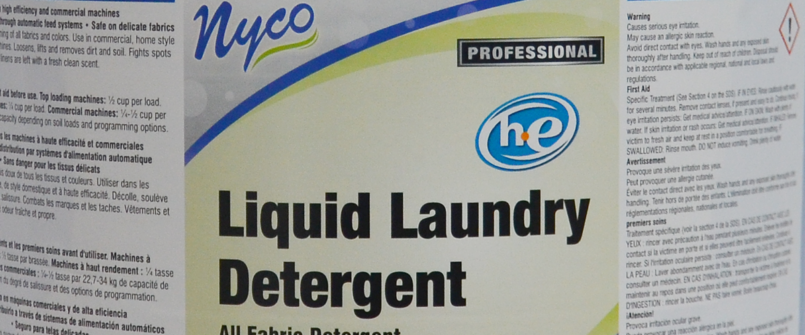
Simple Science, Technical & Regulatory
How to Read a Chemical Label, with Simple Diagrams
“Read your label.”
This phrase is practically a mantra at Nyco. And for good reason. There’s a lot of important (sometimes even life-saving) information on your chemical label. Anyone who uses chemicals for cleaning, disinfecting, floor care or anything else, is responsible to understand both the benefits and risks of using them. Here are just a few reasons you should understand how to read a chemical label…
- Safety – for yourself and others
- Protection – of the surface(s) you’re cleaning and your working environment
- Using the correct amount of chemical to get the job done – no more, no less
- Proper application of the chemical you’re using
- In the case of disinfectants and sanitizers, understanding which germs the product kills, and what dwell times are needed for effectiveness
- Understanding First Aid procedures in case of an accident
Commercial chemical labels contain a lot of information, so they may sometimes look overwhelming at first glance. However, if you understand where to locate the information you need and how to interpret it, you’ll be on your way to using chemicals in the most effective and safest way possible.
Here’s an example of our Liquid Laundry Detergent label. This is a pail label with what we’ll refer to as left, front, and right “panels”.
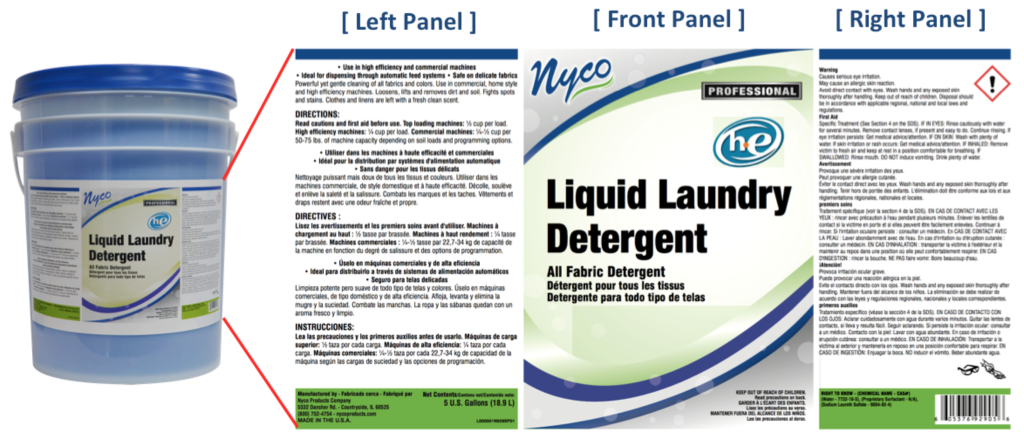
Let’s break it down.
1. Ah, the beautiful Nyco branding. You’ll recognize our national brand products with the Nyco logo in the upper left corner and a consistent visual design from product to product. Some of the label colors may vary depending on the product category.
2. The name of each product with a descriptive statement underneath is big, bold, and central on the front panel. In this case Liquid Laundry Detergent is the product name and the descriptor is All Fabric Detergent.
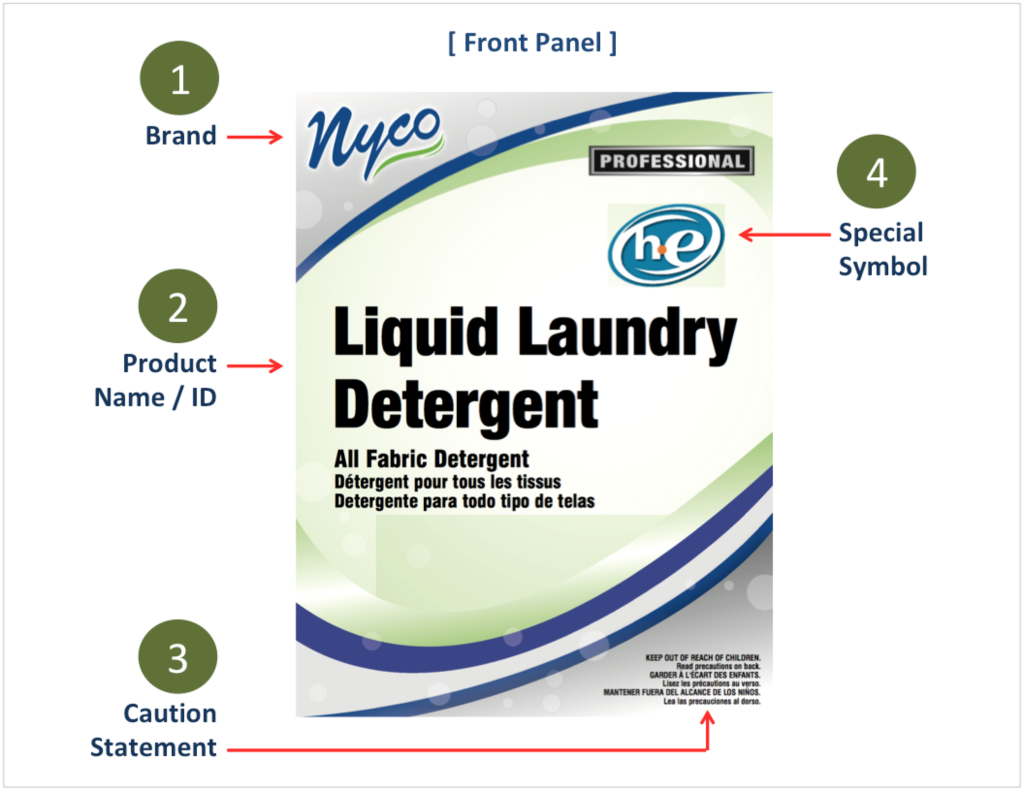
3. For additional user safety Nyco places a Caution Statement on the front panel of our labels.
4. Some chemical products may have third party certifications or other benefits that we indicate with a Special Symbol or logo. In this case the “he” symbol means the product is formulated for “high efficiency” washing machines. Another example of a symbol or logo would be EPA Safer Choice-certified items. Following are some of the logos you may see on chemical labels that designate special properties or certifications:

5. On most Nyco items, the Manufacturer Directions are articulated in 3 languages – English, French and Spanish. Directions will include how to apply the chemical, the recommended Dilution ratio, and any other special instructions. We cannot emphasize strongly enough how important it is to follow Manufacturer Directions for both safety and effectiveness of the chemical.
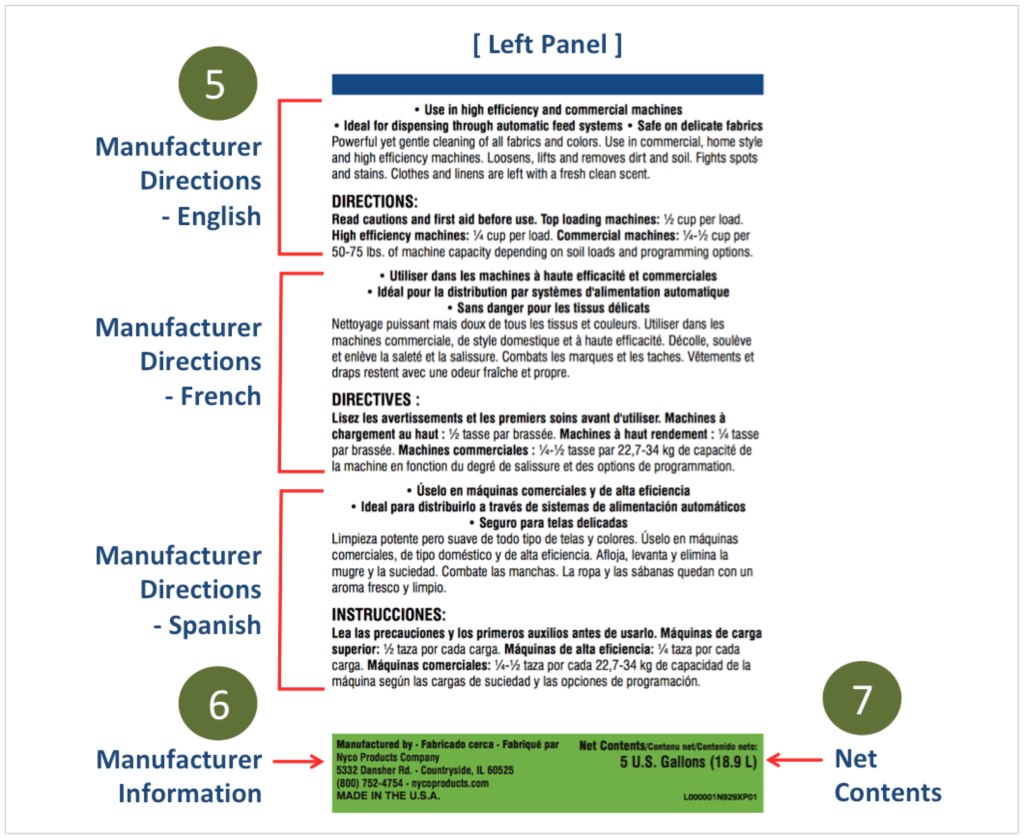
6. Manufacturer Information lets users know where they can contact us. We’d love to hear from you any time!
7. Net Contents show the volume of product inside the container.
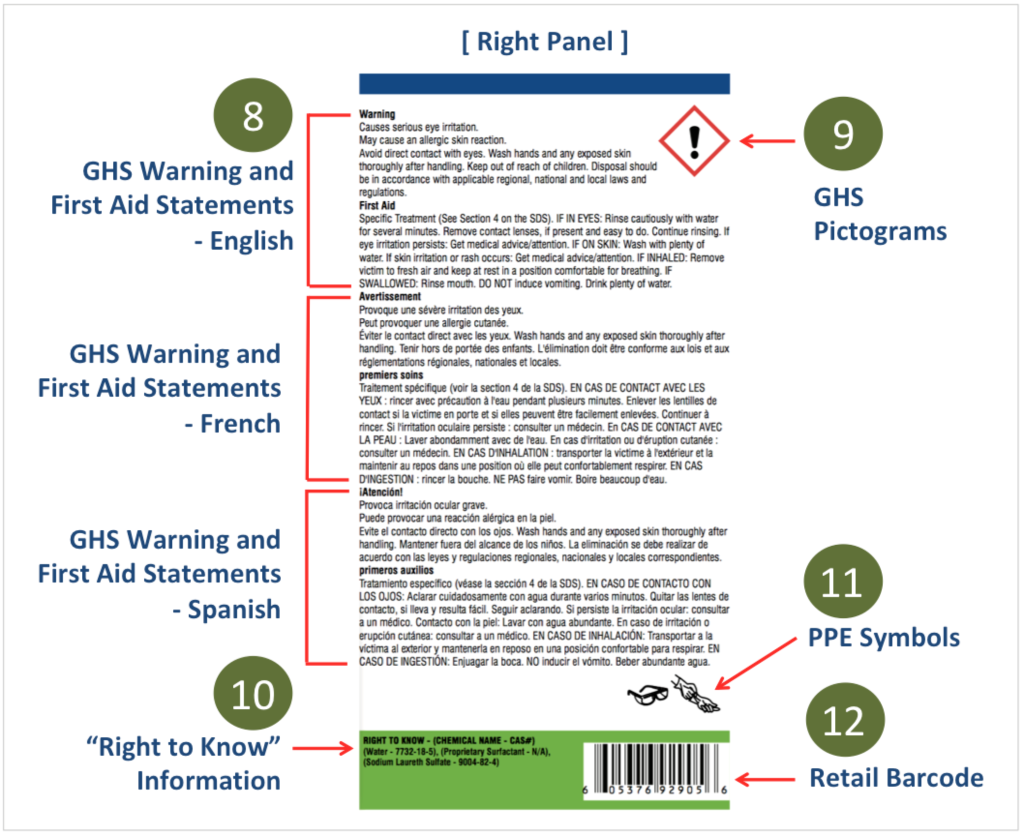
8. In 2015, OSHA, through the Globally Harmonized System (GHS) for Hazard Communications, began requiring commercial chemical labels to be standardized with consistent language for hazard Warning/Danger Statements and First Aid Statements. These statements are for the benefit of users, so you can understand the health and environmental impact of various chemicals. Nyco communicates this important information in 3 languages. All commercial chemicals fall into one of 9 hazard classifications, which determine which Warning/Danger and First Aid Statements must be on the label. All commercial and industrial chemical manufacturers need to print the same language on their labels. If you happen to have a chemical accident, look immediately at the First Aid Statement on your bottle or pail for how to proceed.
9. Intended for users to quickly and easily see the health and environmental hazard classification of a chemical, GHS also requires Pictograms to be printed on labels. Similar to the Warning and First Aid Statements, Pictograms are standard across all manufacturers. There are 9 OSHA chemical classifications (shown below), each meaning something unique and specific. There can be none, one, or more than one Pictogram on a label, depending on the nature of the chemical.
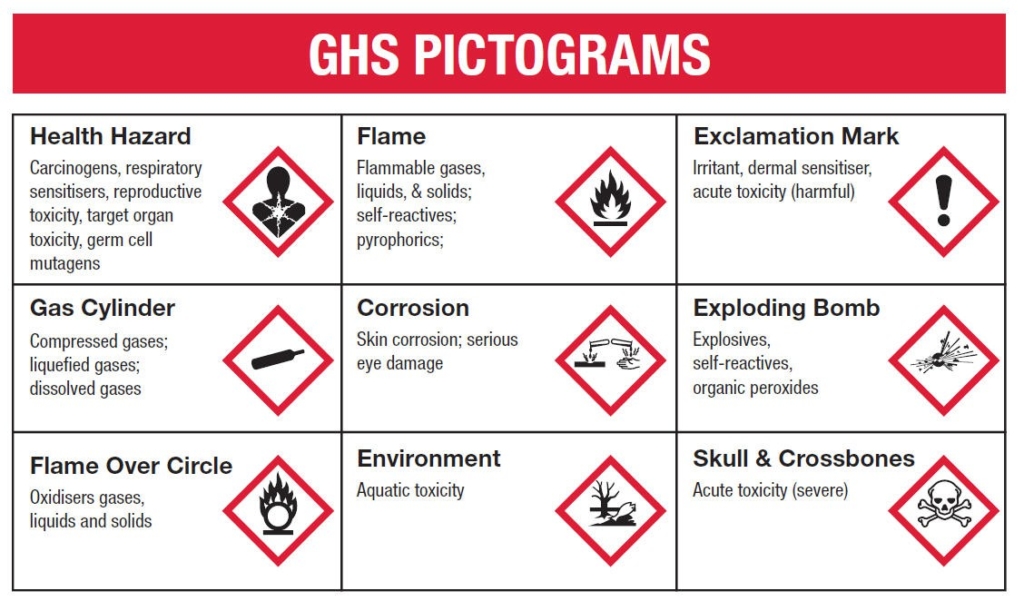
10. More technical in nature, also shown on our labels is your “Right to Know.” It lists the top 5 chemical ingredients that are in a formula, based on percentages. Almost all of our chemical formulations will list water as the first ingredient.
11. For your safety, Nyco also shows customers, at a glance, the Personal Protective Equipment (PPE) you should wear when using a chemical. Simple diagrams depict safety glasses, safety gloves, safety masks or respirators. Be sure to always wear our recommended PPE when working with a chemical.
12. Retail Barcodes provide an easy way for you to track, reorder, and inventory chemicals.
There you have it. Now that you know how to read and understand a chemical label, you’re better equipped to safely and effectively use chemicals to clean your facility, finish your floors, and keep your building safe.
